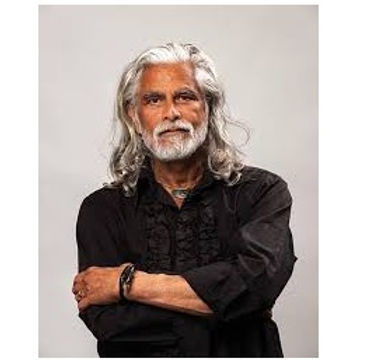
About Us
Finding Solutions Every Turn
My late loving wife, Dr Napawan Punyniyama-Case and I (Dr Gilbert Case) started Advanced Medical Health Clinic, in March of 2005 in Tallahassee, FL. We joined the Tallahassee Chamber of Commerce in 2008 and had our official ribbon cutting in 2011, photo below.

Our Story
In September of 2016, we decided to become a non-profit research clinic, 501(c)(3), since we were having many successes in solving problems, ailments, and diseases that were and still are considered incurable. We embraced two outstanding technologies:
#1: Spinal Decompression without surgery to easily solve back problems, and
#2: LLLT (Low Level Laser Therapy), now renamed to Photobiomodulation Therapy, to easily solve common hand, knee, feet, and joint problems.
Our success rates were phenomenal: 98% and 100% respectively, with over 800 clients for each of these two wunderkind technologies.
We incorporated in 2018 and formed a Board of Directors. We started with only three members, now we have five.
Meet The Board
Our Clients' Testimonals



Welcome
Welcome to our clients' stories. Many of them are like family. Many of them keep in touch even though the clinic has moved from Tallahassee, FL to San Diego, CA.
This section is in process. 21 testimonials are begin transferred from our older website.
RESEARCH
AMHC conducts mainline research across all advances in science. The goal of this section is to post the latest and best proven research topics with references and summary explanation. AMHC has chosen the following SIX main categories for review and the readers education:
MEDICAL & HEALTH, BIOLOGY, CHEMISTRY, NANOTECHNOLOGY, BELIEVE IT or not! and LASERS
#!: Evolution of Spinal Decompression at AMHC
The following table shows how AMHC has evolved the computerized system of highly effective spinal decompression using AccuSpina to a unique approach to DoItYourself spinal decompression with AMHC's expert supervision:
#2: Stem Cells.
Most folks know very little about stem cells. To bridge this gap, please review the following NIH website:
http://stemcells.nih.gov/info/basics/
If you have heart disease, congestive heart failure or cardiomyopathy, you would well-advised to visit the following website:
http://texasheart.org/research/stemcellcenter/index.cfm
#3: Genetics – Sequencing.
The advent of high-throughput next generation sequencing technologies have fostered enormous potential applications of supercomputing techniques in genome sequencing, epi-genetics, metagenomics, personalized medicine, discovery of non-coding RNAs and protein-binding sites.
Further, the next generation sequencing technologies will foster enormous potential applications of supercomputing techniques in genome sequencing, epi-genetics, metagenomics, personalized medicine, discovery of non-coding RNAs and protein-binding sites. And most importantly, next generation sequencing will substitute microarray techniques, the currently used technology in genomics and bioinformatics.
#4: Chemistry
Chemistry is the research door of many past openings. This door opened in 1998 the Noble prize in Physiology and Medicine went to three individuals for the discovery of Nitric Oxide as a primary “signaling molecule” in the cardiovascular system in the human body. These 3 individuals were Robert F. Furchgott, Louis J. Ignarro and Ferid Murad. Since then, more research has shown that all 11 human systems are somewhat regulated by the signaling molecule, NO.
Behind another door, there is a synthetic peptide making news called BPC 157. It exerts beneficial effects on stroke, schizophrenia, spinal cord injury and bladder pain syndrome (Perovic et al., 2019; Vukojevic et al., 2020; Zemba Cilic et al., 2021). Researchers have consistently demonstrated that BPC 157 exerts a myriad of beneficial effects throughout the body. This mechanism of BPC 157 (i.e., BPC 157/dopamine/glutamate/NO system) represent an alternative that acts within the gut-brain axis, regardless of whether this action is direct or indirect.
Science Daily (Jan. 5, 2012) Oxytocin, the “love hormone” that builds mother-baby bonds and may help us feel more connected toward one another, can also make surly monkeys treat each other a little more kindly. Administering the hormone nasally through a kid-sized nebulizer, like a gas mask, a Duke University research team has shown that it can make rhesus macaques pay more attention to each other and make choices that give another monkey a squirt of fruit juice, even when they don’t get one themselves.
#5: Batteries
They power our phones, our computers, even our cars. But batteries have one big downside, they die! And usually way to soon and at the worst possible time. Chemist Amy Prieto and her colleagues at Colorado State University are working to change that.
A high surface area means it will charge faster. The battery is made up of three main parts: an anode-made of tiny copper nanowires, a cathode-made from a rubber-like material, and an electrolyte-made of plastic that separates the anode from the cathode. Nanowires increase the battery’s performance and are so small that 25 million of them can fit on the surface of a penny. “So, they’re really tiny, that surface area is about 10,000-times higher, so that’s where you get this power from, Prieto explained.
#6: NanoWires
Ultra-miniature wires just one atom tall have been created by inserting a string of phosphorus atoms in a silicon crystal by a team of researchers from the Univeristy of New South Wales, Melbourne Univeristy and Purdue University. This image from a computational simulation run of the wires shows electron density as electrons flow from left to right. The wires are 20 times smaller than the smallest wires now available and measure just four atoms wide by one phosphorus atom tall. (Credit: Purdue University image/Sunhee Lee, Hoon Ryu and Gerhard Klimeck)
And for physicists, the results show that Ohm’s Law, which demonstrates the relationship between electrical current, resistance and voltage, continues to apply all the way down to an atomic-scale wire.
#7: The Green Flash
The Green Flash is a natural light phenomenon that happens at sunrise or sunset. If you have not ever seen one, it’s because it is faint and only happens for 1-2 seconds. In the photo, one is caught behind the Golden Gate Bridge in San Francisco and that magic moment in time is unforgetable. There are beach restaurants around the world called “The Green Flash” to make people aware of this natural wonder.
#8: Dogs are Right and Left Handed
According to the largest-ever study of canine handedness, most dogs are right-handed. Male dogs are more likely to be right-handed than female dogs, and younger dogs are more likely to be left-handed than older dogs. Dogs really do have a preferred paw or limb, otherwise known as lateralisation. Our canine companions show a more show a more even distribution between rightys and leftys. ALSO: Dogs see Color, but not reds.
#9: Lasers
A laser is a device that emits light through a process of “Light Amplification by Stimulated Emission of Radiation”. We recognize the immense healing technology available through Medical Lasers in the health sector. The photo to the right is a laser diode powered by 3 volts and is less than 1 inch in length. Lasers have both medical & commercial purposes. There are FIVE main classes of lasers:
Class . . . . . . . Strength . . . . . .Example/Focus . . . . . . . . . .Year Began
Class I/II . . . . < 1 mW . . . . . . Laser printers/pointers . . . . . . 1980s
Class IIIA . . . 1 – 5 mW . . . . . Telescopes . . . . . 1990s
Class IIIB . . . . 5 – 500 mW . . .Medical Grade . . . 1970s
Class IVa . . . . 10 – 10,000W. . Industrial – Safety Issues 1950s
Class IVb . . . . .0.5 – 10 W . . . Extended Medical 2000s
Class IIIB laser equipment is used for Low Level Laser Therapy (LLLT). Also named Photobiomodulation Therapy and is the group of Clinical Lasers used at Advanced Medical Health Clinic. See the SERVICES section for details.
Future technologies are Ai and robotics, now matter how many mistakes they make.
Robot doing Research










